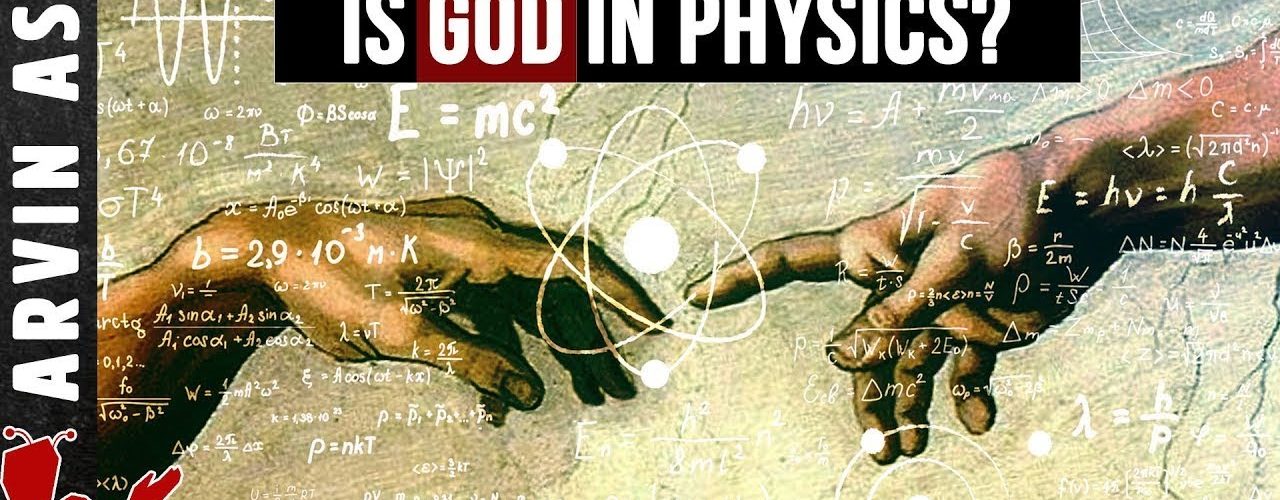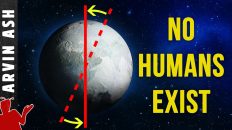Does God exist in physics? The fine tuning argument.
Before the age cable TV, streaming video and video games, there wasn’t much to do at night except maybe gaze at the stars and look at the beauty of the universe.
Until 350 years ago, there was a distinct demarcation between what people observed on earth and what people saw up in the sky. There did not seem to be any connection. Things that happened on earth could at least be seen and explained at least in terms of cause and effect.
The heavens seemed to be an utter mystery. The motions planets, though predictable, did not appear to follow the same patterns as objects here on earth. To many this was the sign of the hand of a creator. It must be God that ruled over the universe controlling the movement of these heavenly bodies, and to gaze at the stars was to bear witness to the majesty of God’s design.
Along came Isaac Newton in 1687 with the publication of the astounding Principia Mathematica who showed that heavenly bodies move due to the same forces we experience here on earth.
Newton not only gave us a theory, but also the mathematical basis that allowed us to make very accurate predictions about not only the motions of planets, but also the movement and behavior of things right here on earth. It was a total game changer.
If things could be explained with rational laws and mathematics, to many people this called into question the need for a God.
Arguments for the existence of God began to fall out of favor. But in the late 20th century, these arguments were resurrected. The standard model of particle physics and general relativity is spectacularly accurate. But there are constants in these equations that do not have an explanation. They have to be measured and appear to be just properties of the universe.
And it so happens that many of them are very finely tuned. That is to say, if you change them slightly in either direction, positively or negatively, it could lead to a completely different universe with no life at all.
Does this fine tuning finally give us the answer to the question of God? Can it be shown that God must be present within the constants of physics?
Ironically, Newton himself did not view his equations as negating the need for God. To him, the nature of gravity which he described as action at a distance, meaning a force that acts on things without touching it, was evidence that God still had a hand in the universe.
But Newton wasn’t aware of, particle physics, quantum mechanics and general relativity. These are the best theories we have today to explain the true workings of the universe. And these theories require at least 19 constants, called free parameters, that have to be measured.
So what accounts for these constants? There are currently no equations or theories from which these parameters arise.
And many scientists point out that some of these are so finely tuned that even a slight variation would have resulted in a universe devoid of life. They point out for example, the mass of a neutrino is 2X10^-37kg. It has been shown that if this mass was off by just one decimal point, that is if it was 2X10^-36kg or 2X10^-38 kg, life would not exist because if the mass was too high, the additional gravity would cause the universe to collapse. If the mass was too low, galaxies could not form because the universe would have expanded too fast. In either case life could not exist.
How lucky are we that there are exactly 36 zeros in this mass? Advocates of fine tuning argument say that it can not just be a matter of luck. The best explanation they say is that the universe had a designer who fine tuned it for life.
This is a very impressive argument indeed. But on closer examination, it has some problems. First, the argument exaggerates the idea of fine tuning by using misleading units of measurement, to make fine tuning seem much more unlikely than it may be.
You’ll see for example, that the mass of neutrinos is expressed in Kg. These things are so small that any fluctuation expressed in Kilograms would be a huge fluctuation.
Using kilograms to measure something this small is the equivalent of measuring a person’s height in light years.
It’s like saying that Lebron James is 2X10^-16 light years in height. If he was just 2X10^-15 or 2X10^-17 light years in height, he wouldn’t have been able to play basketball. Well, this is true, because it would mean 6 foot 9inches, like he is, he would be either a 60 foot lumbering giant or less than 8 inches tall. Lebron is 81 inches tall. The fact is that he was 4 inches shorter or taller, a difference of 5%, he would still be able to play basketball, and he would probably still be one of the best. So his height expressed in inches instead of light years is a better way to look at fine tuning.
So when you look at the constants expressed in terms that make more sense, then the fine tuning argument doesn’t seem all that impressive.
The kilogram measurement for the neutrino is arbitrary, a better measurement would be electronvolts or even picograms.
Another point is that although Lebron could be any height – 1 foot, 1 inch, 10 feet, 100 feet. In reality, he is not going to be 1 foot tall. The average male in the U.S. is about 5 feet 9 inches tall, so most males are going to be close to that figure give or take a foot, not give or take 5 feet. There is no real chance that Lebron could have been 60 feet tall.
Similarly, most of the constants of the universe could not really be any arbitrary number, they are going to hover around some value close to what they actually are. The value of the mass of a neutrino for example could not be the mass of a bowling ball. Such massive particles with the property of a neutrino could not have been created during the Big Bang.
So the person presenting the fine tuning argument has to show that the values really need to be in a very specific range using units of measurement that are appropriate. And when you put the argument in these terms, it doesn’t seem so compelling.
The fine tuning argument also concludes that the universe must be fine tuned based on the observation that if one of its properties were any different, life could not exist. It has to have exactly the properties that it has.
The problem with this statement is that it presumes a narrow definition of life based on the anthropic view that life has to be the of the kind that we see on earth, in a universe that has the properties of our universe.
Even if it were true that a universe with different constants could not support life as we know it, it does not follow that the laws we have are the only ones conducive to life.
For example, if the strength of electromagnetism was slightly larger or smaller, it would mean that atoms would be slightly smaller or larger, respectively. This probably would not preclude atoms form being formed, or chemistry from taking place. Life could probably still exist, but it would just be different.
The analogy is like this – if you have a square with sides that are 1 meter in length. And then you say, ok, if any of the sides were anything other than 1 meter, for example if the right side was 0.9 meters, then you would no longer have a square. That is absolutely correct.
But this does not mean that you could not make a square with different length sides. You could have a square with sides that are 50 centimeters, or 1 centimeter or 2 meters. Just because one of the sides is a different length for your square does not mean that a different square has to have the same length sides. There is more than one way to make a square.
Similarly, there could be other universes that support life with a different set of constants.
Most scientists believe that in order to have life in any universe, complex chemistry is necessary because life needs complex bio chemicals. In order to have this kind of chemistry, larger atoms such as carbon, oxygen, nitrogen and iron are required.
But after the big bang only the lightest elements, hydrogen, deuterium, helium and lithium were formed. The heavier elements were not produced until hundreds of millions or billions of years later. This time was needed in order for large stars to form and assemble these elements in their core, because that’s the only place where fusion can form the larger, heavier atoms of the periodic table. When these large stars exploded, they spewed all these atoms needed for life into space. Newer stars like our sun formed, and planets also formed around it containing these life-giving elements.
In a 1983 paper, Press and Lightman showed that much of the gross properties of the universe, from the dimensions of atoms to the order of magnitude of the lengths of the day and year, can be estimated from the values of just four fundamental constants. These are the strengths of the electromagnetic and strong nuclear interactions, and the masses of the electron and proton.
Taking this information, Physicist Victor Stenger did a study in 2000 where he varied these 4 constants to see what the potential universes would look like. He analyzed 100 universes in which he randomly varied the constants by 5 order of magnitude above, and 5 order of magnitude below their actual values in our universe. What he found was that over half the universes would have stars that live at least a billion years. This would be enough time for large atoms and complex chemistry to occur.
Although a long stellar lifetime is not the only requirement for life, his study showed that this very important parameter for life is not an unusual property for a rather random universe to have.
He also found some other interesting information. For example, he found that if the mass of the electron was 100,000 times lower, the proton mass could be as much as 1,000 times lower to achieve the same minimum stellar lifetime. There are lots of combinations where you could vary two or more constant and still have viable universes.
There is more than one way to skin a cat, and there is more than one way to build a universe.
Another theory says that the constants we happen to have is due to the probability inherent in the laws of quantum mechanics. At the big bang, cosmologists believe that the laws of quantum mechanics became applicable. If this is true then the wave equation of the universe decohered or collapsed randomly in such a way that the constants were set from the very beginning.
There may have been multiple instances or bubbles of universes. And each of these may have had different initial conditions leading to different sets of constants. Perhaps most failed to develop.
Philosophers like John Leslie, of the University of Guelph think that if the universe had multiple tries before we happen to exist. And what we see could be a form of natural selection similar to evolution. If you buy enough lottery tickets, you’re going to win eventually. If enough universes form, you’re bound to get one with life like ours.
This is just one of several multiverse ideas suggested by modern cosmological models, including ideas that emerge from string theory, as well as the many worlds interpretation of quantum mechanics. No known principle rules out the existence of multiple universes.
In fact, we would need to hypothesize a new principle in physics to rule out all but a single universe. If multiple universes exist, then we are simply in that particular universe of all the logically consistent possibilities that had the properties needed to produce us.
Science may someday have a theory from which the values of existing physical constants can be derived or explained. What looks like fine tuning may really be due to our ignorance of the underlying mathematics that would explain these constants. Nature may ultimately reduce to a single principle from which all these constants could arise. We are not there yet.
The fine-tuning argument seems to be saying something analogous to the idea that the Sun radiates light so that we can see where we are going. In fact, the human eye evolved to be sensitive to light from the sun. The sun is not fine tuned for our eyes. Our eyes are fine tuned for the sun. Similarly, the universe is not fine-tuned for humanity. Humanity is fine-tuned to the universe.
Let me point out that I don’t think many scientists dispute that life as we know it probably would not exist if the constants of physics were different. And no one can say for sure that some other form of life is feasible with a different set of constants. But anyone who insists that our form of life is the only conceivable life, would be making a claim based on no evidence and no theory.
You could argue that if God is not in the constants, then he must be in the laws that underlie the constants – the laws of quantum mechanics and general relativity. After all, if the universe follows fundamental laws, there must be a law giver.
But the problem with this argument is that you are replacing something like the laws of physics that may be eternal, with something else that is eternal but more complicated. God is more complicated because he is infinitely complex, and does not have to obey the laws of physics.
Does it make more sense to say the universe came into being because of a set of preexisting laws, or the universe came into being because a preexisting entity created eternal laws which allowed the universe to come into existence.
According to professor David Johnson of Kings College. It will be trying to explain the currently unexplained, with something that is inexplicable.
God may or may not exist. I don’t claim to know the answer. He may be found at some point, And some principle or theory of nature may prove it. But he probably would not emerge from the constants of the universe.







